In this Math Is Visual Prompt, students are given the opportunity to explore the idea of units of measure and in particular, work between different metric units of measure through unit conversion. This is a complete visual of this task which will be unpacked through a series of visual prompts and a full visual solution. However, a much more complete solution making use of area models and linear models (double number lines) is unpacked in the Jugs of Milk 3 Act Math Task on my blog, Tap Into Teen Minds. A good place to start prior to this is with the Hot Chocolate task also up on my website here.
The best part about this particular series of Math Is Visual Prompts is that they are based on a question that was posed on a standardized test.
Here’s the original problem:
Tyson empties 6 jugs of milk into a container.
Each jug contains 4 L of milk.
He uses the container of milk to fill cartons.
Each carton requires 250 mL of milk.
How many cartons will he be able to fill?
This question was taken from the 2018 Release Materials of the EQAO Grade 6 Assessment of Mathematics.
Interestingly enough, this multiple choice question only saw 34% of students across the province of Ontario answer correctly.
I’m sure you’re curious how we might be able to turn a tough problem like this into a curious, visual experience for students in order to lower the floor.
Let’s get started…
Spark Curiosity: What Do You Notice? What Do You Wonder?
Ask students “What do you notice? What do you wonder?” to spark curiosity and pause where indicated in this video.
Here’s an animated gif and image of what students/children will be looking at when you are instructed to pause the video:
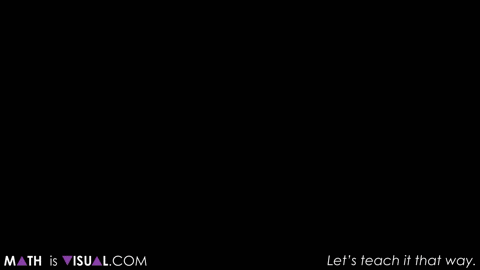
Alternatively, you can show this still image:
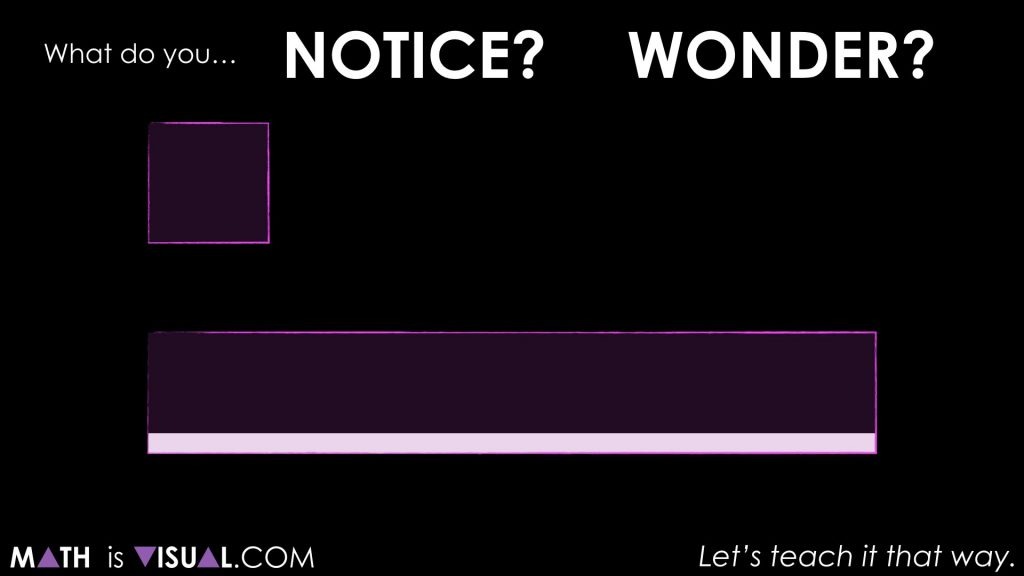
After students share what they notice and wonder, you can then show them the next portion of the video until you’re instructed to pause.
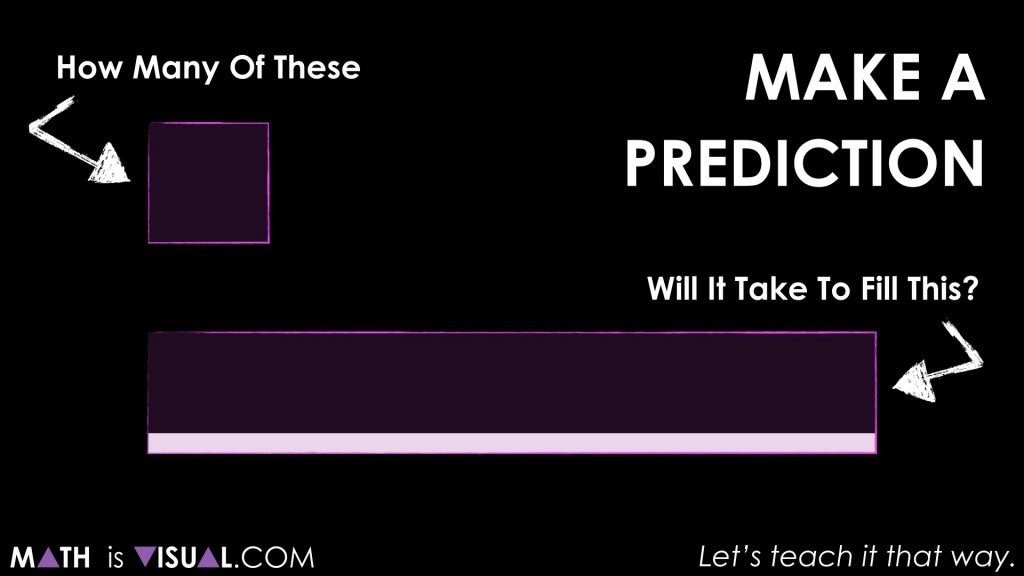
Here, students are now able to go ahead and try to make an estimate using spatial reasoning skills only. Having manipulatives out is a huge help.
After students are given time to share their estimates based on the visual, you can reveal the following visual prompt (also included in the video at the top of the page):
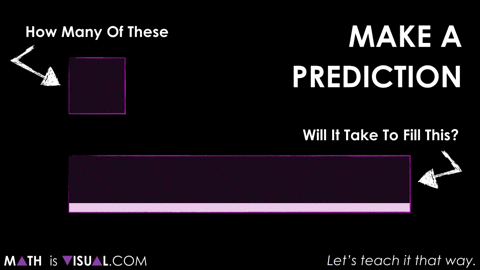
Kids should have fun with that. Now, with the room buzzing with energy, we head into the real reason for this task:

The question is asking how many of the small “squares” can be filled with the liquid in the container.
Let kids think, pair, and finally, share with their elbow partners before out to the whole group.
Act 2: Give More Information
After students have given their estimates / predictions, you can reveal more information:
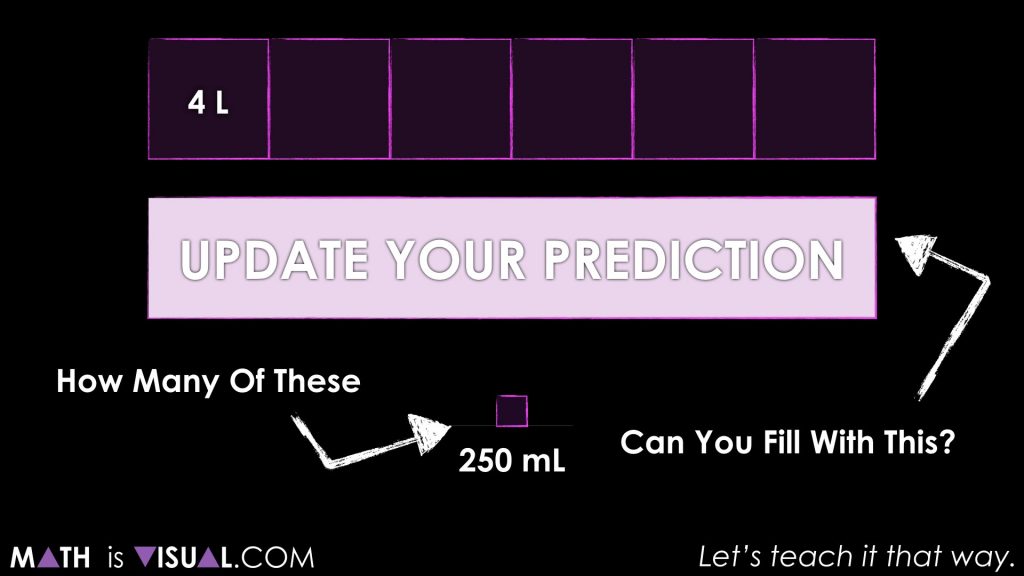
Now is where the real fun happens.
How are students going to solve this problem?
Our goal is to promote the use of tools & representations so students can show and convince others of their solution strategies instead of being limited to only computation through the use of steps and procedures alone.
Act 3: The Big Reveal
Students can now celebrate when they see how many small cartons can actually be “filled” by this container:
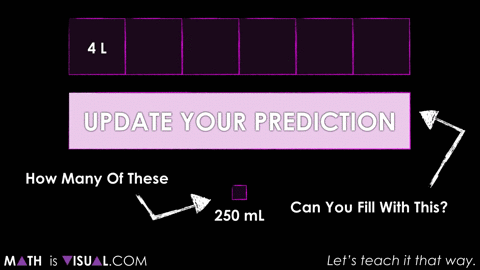
Alternatively, you can show this still image:
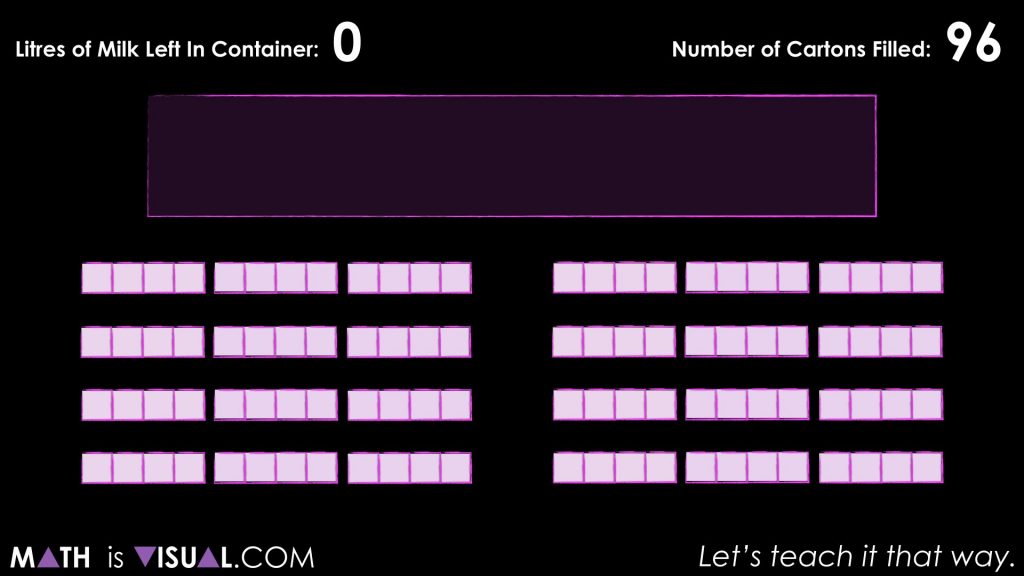
The hope for this set of visual prompts is to give students an opportunity to “play” with measurement visually and in particular, be able to tackle problems involving unit conversion conceptually instead of only procedurally. To begin, we really lean on students spatial reasoning skills and if they don’t have strong spatial skills, this is a great activity to help them build it up – since it CAN be learned, but only through experience.
This is also a great task to build in ideas around proportional reasoning including the idea of rational numbers, in particular the idea of partitioning for fractions and also working towards the idea of ratio and rate since we know that there are 6 jugs in every large container and there are also 16 cartons in every jug.
How’d It Go?
Thanks for watching and reading!
Are the written summaries helpful? If so, please let me know in the comments so I know the time put into them is time well spent.
Did you use this in your classroom or at home? How’d it go? Post in the comments!
Math IS Visual. Let’s teach it that way.

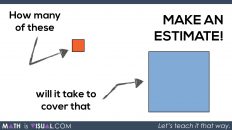
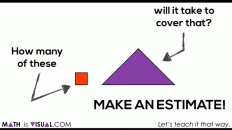
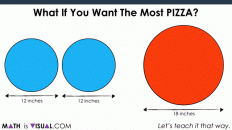
Homeschool parent here. My degree is in science and I’ve always loved math and science so I pass that along in our homeschool groups.
I deeply appreciate your written discussion of what you are presenting because it helps me set developmentally appropriate expectations and adjustments across a wide range of student ages and capabilities.
Thank you.
Thanks a million for stopping by and sharing your feedback! So glad you enjoy the site 🙂
I LOVE THIS! Do you have videos somewhere to be downloaded so I can put them in Desmos or have you already done that?
So glad you’re digging it! Sadly, I don’t currently have the videos up for download (yet), but maybe this is something to be put higher up on my priority list?
Yes, thank you. The written summaries are very helpful.
Love this visual approach — it really helps make abstract conversions click. Do you plan to cover metric-to-imperial conversions too? That’s where many of my students get stuck. Would be great to see your take on it!
Thanks for stopping by and I love the idea. We’ll add it to the list!